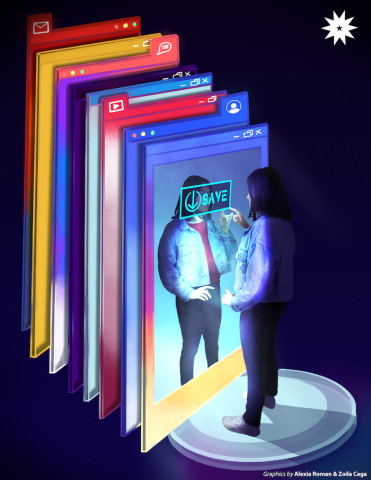
There is a formula in the general archiving conversation, regardless of medium: documentations of the present eventually become relics of the past for a historian decades later to reconstruct history with. The archivist works with what is left of time—and for the historian, what is left of time is often not more than scraps. If our formula had preservation in mind before documentation even begins, society would benefit from having much more scraps to look back to.
In the age of messaging on the fly, there are way more scraps than ever before. The archivist’s problem stays the same even though the instant nature of the web has provided massive opportunities for archiving; have a bit too many than what we can actually save, and we end up preserving just as much as we did without the web.
‘A record of our age’
The internet as a historical source has become a novel pursuit to contemporary historians and archivists worldwide, as the nature of what counts as historical records changes with time. People used to write to each other on paper, and historians have made careers out of deciphering these letters that have managed to stay intact, sometimes barely, through time. But with instant messaging through chats, emails, and social media posts, records of the 21st century have instantly gone from paper to screen.
With “instant” comes convenience. Publishing content, once an expensive task reserved for royalty and politicians, became a regular activity for the man in the street. With the rise of what Spanish sociologist Manuel Castells called “mass self-communication” through the web’s most popular feature, social media, about 5 billion users are now writing and uploading content on things that matter to them. With this, the world has a massive potential repository for future historians.
But we say “potential” because emails and Facebook posts do not save themselves. Like any other record, the internet is subject to common archiving practices: downloading, capturing, and storing. “Social media is a record of our age, but it is fleeting. The historian of the future will have a hard time not only by the sheer volume of material but also that these are not in physical form,” says Ambeth Ocampo, historian and former chairman of the National Historical Commission of the Philippines.
“How many of us download emails or social media posts?”, Ocampo asks.
You’re going to need a bigger archive
“I built a career on the 25 volumes of Rizal’s collected writings: letters, diaries, essays, novels, drawings, [and] even laundry receipts. If Rizal had a cellphone, he might not have written as much, and Ambeth Ocampo would have no career,” the public historian writes in an email.
Ambeth Ocampo would have no career indeed because Rizal would not bother to save his digital messages. He most likely never thought of it for his writings either. Still, luckily enough, his friends and enemies would keep these papers cozily hidden somewhere to be rediscovered a century later. However, later historians may not have so much luck with the future “great men” of the digital age.
So there came some of the biggest attempts to archive the world’s mass self-communication through Twitter. In 2010, the social media app “gifted” the United States’ Library of Congress access to a stream of all public tweets starting from its launch in 2006. That project’s ambition was to archive trillions of tweets out of millions being tweeted every day, but the Library eventually pulled the plug and reduced it to preserving fewer tweets on a “selective basis” over capacity issues.
The rationale for this was similar to what a 2016 paper by Australian media scholar Axel Bruns argues that the microblogging platform has become a “first draft of the present”, much like how journalism would be the first in the news, except now that more people have broken news of events happening near them before reporters have arrived at the scene. “But like all drafts, theirs is fragile and easily lost—a loss which, we believe, would impact significantly on future historians’ ability to understand the story of humanity in the early twenty-first century. What follows from this is an acute need to address the preservation of social media content,” Bruns writes in The Conversation.
Web archiving is a stretch
The internet, in general, as a historical source has potential, but it is also trickier than studying old laundry receipts. For one, websites are constantly changing and updating. See how the Wayback Machine—a digital archive of the world wide web founded by the nonprofit Internet Archive—has hundreds to thousands of captures for a single webpage. The home page of the Philippine Daily Inquirer’s website alone has a total of 36,131 captures on the Machine spanning over two decades of changes from June 14, 1998 to July 30, 2022.
“The major problem with the web of the past is that contrary to what we might think, yesterday’s and today’s web is often gone tomorrow if no one has preserved it, for instance, a scholar or an archiving institution,” says Niels Brügger, internet historiographer and head of the Center for Internet Studies in Denmark’s Aarhus University, in a 2012 paper.
Quite fortunately for the field of history, the practice has never been about making a complete copy of the past. History is a tiny fraction of the whole body of the past based on the few things that survive and are remembered; and so will it be the case for 21st-century history, just in a different format. “Archives can only save so much, and so historians cannot really recreate the past until the time machine is invented,” Ocampo reiterates. “In the meantime, they work…based on the material available to them.”
With reports from Alexia Roman
